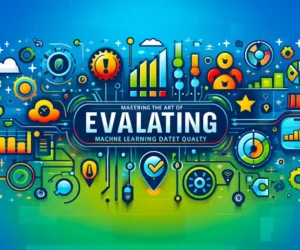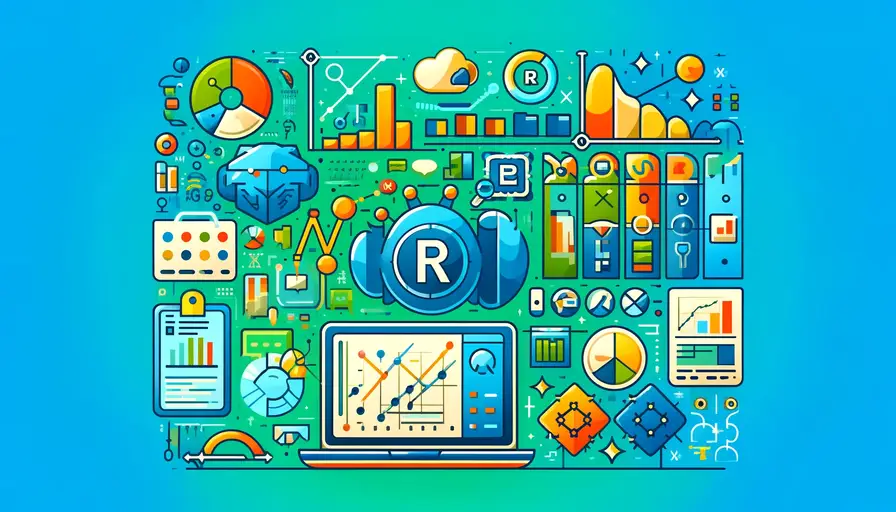
Can I Learn Machine Learning With R Programming?

Machine Learning with R
R programming is a powerful tool widely used for statistical analysis, data visualization, and machine learning. Its extensive libraries and strong community support make it an excellent choice for learning and implementing machine learning algorithms.
Why Choose R for Machine Learning?
R is a preferred choice for machine learning due to its rich ecosystem of packages, ease of use, and strong capabilities for data manipulation and visualization. It supports a variety of machine learning algorithms and provides tools for data preprocessing, model training, and evaluation.
Key Features of R
R offers several features that are beneficial for machine learning, including:
- Comprehensive statistical analysis tools
- Strong data manipulation capabilities with packages like dplyr and data.table
- Advanced visualization tools such as ggplot2 and lattice
- Extensive machine learning libraries like caret, randomForest, and e1071
Example: Installing R Packages for Machine Learning
Here’s an example of installing essential R packages for machine learning:
Comparing X and Y: Evaluating the Superiority for Machine Learning# Install necessary packages
install.packages(c("caret", "randomForest", "e1071", "ggplot2", "dplyr", "data.table"))Data Preprocessing in R
Data preprocessing is a crucial step in machine learning that involves preparing raw data for analysis. R provides powerful tools for cleaning, transforming, and normalizing data to ensure it is ready for model training.
Data Cleaning
Data cleaning involves handling missing values, removing duplicates, and correcting inconsistencies in the dataset. R packages like dplyr and tidyverse make data cleaning efficient and straightforward.
Example: Data Cleaning in R
Here’s an example of data cleaning using dplyr:
# Load dplyr library
library(dplyr)
# Sample data
data <- data.frame(
ID = c(1, 2, 2, 4, NA),
Age = c(25, 30, NA, 40, 35),
Gender = c("M", "F", "F", "M", NA)
)
# Clean data
clean_data <- data %>%
filter(!is.na(ID)) %>% # Remove rows with NA IDs
distinct() %>% # Remove duplicate rows
mutate(Age = ifelse(is.na(Age), mean(Age, na.rm = TRUE), Age)) # Fill NA in Age with mean
print(clean_data)Data Transformation
Data transformation involves converting data into a suitable format for analysis. This may include scaling, normalization, and encoding categorical variables. R provides functions like scale() and packages like caret for efficient data transformation.
Example: Data Transformation in R
Here’s an example of data transformation using the caret package:
# Load caret library
library(caret)
# Sample data
data <- data.frame(
Age = c(25, 30, 35, 40, 45),
Income = c(50000, 60000, 55000, 70000, 65000)
)
# Scale data
scaled_data <- preProcess(data, method = c("center", "scale"))
transformed_data <- predict(scaled_data, data)
print(transformed_data)Machine Learning Algorithms in R
R supports a wide range of machine learning algorithms, including regression, classification, clustering, and more. It provides packages like caret, randomForest, and e1071 to implement these algorithms efficiently.
Regression Algorithms
Regression algorithms are used to predict continuous outcomes. R provides various regression techniques, including linear regression, logistic regression, and ridge regression.
Example: Linear Regression in R
Here’s an example of implementing linear regression using caret:
Machine Learning in IT Systems# Load caret library
library(caret)
# Sample data
data <- data.frame(
Age = c(25, 30, 35, 40, 45),
Income = c(50000, 60000, 55000, 70000, 65000)
)
# Train linear regression model
model <- train(Income ~ Age, data = data, method = "lm")
print(model)Classification Algorithms
Classification algorithms are used to predict categorical outcomes. R supports several classification techniques, including decision trees, random forests, and support vector machines.
Example: Random Forest Classification in R
Here’s an example of implementing random forest classification using randomForest:
# Load randomForest library
library(randomForest)
# Sample data
data <- data.frame(
Age = c(25, 30, 35, 40, 45),
Income = c(50000, 60000, 55000, 70000, 65000),
Purchased = as.factor(c(0, 1, 0, 1, 0))
)
# Train random forest model
model <- randomForest(Purchased ~ Age + Income, data = data)
print(model)Model Evaluation in R
Model evaluation is a critical step in machine learning that involves assessing the performance of trained models. R provides various metrics and visualization tools to evaluate model accuracy, precision, recall, and more.
Accuracy and Confusion Matrix
Accuracy is a common metric used to evaluate classification models. A confusion matrix provides a detailed breakdown of the model's performance.
Machine Learning and PredictionExample: Confusion Matrix in R
Here’s an example of generating a confusion matrix using caret:
# Load caret library
library(caret)
# Sample data
data <- data.frame(
Age = c(25, 30, 35, 40, 45),
Income = c(50000, 60000, 55000, 70000, 65000),
Purchased = as.factor(c(0, 1, 0, 1, 0))
)
# Train random forest model
model <- train(Purchased ~ Age + Income, data = data, method = "rf")
# Predict and generate confusion matrix
predictions <- predict(model, data)
conf_matrix <- confusionMatrix(predictions, data$Purchased)
print(conf_matrix)Precision and Recall
Precision and recall are important metrics for evaluating classification models, particularly when dealing with imbalanced datasets.
Example: Precision and Recall in R
Here’s an example of calculating precision and recall using caret:
# Load caret library
library(caret)
# Sample data
data <- data.frame(
Age = c(25, 30, 35, 40, 45),
Income = c(50000, 60000, 55000, 70000, 65000),
Purchased = as.factor(c(0, 1, 0, 1, 0))
)
# Train random forest model
model <- train(Purchased ~ Age + Income, data = data, method = "rf")
# Predict and calculate precision and recall
predictions <- predict(model, data)
conf_matrix <- confusionMatrix(predictions, data$Purchased)
precision <- conf_matrix$byClass['Pos Pred Value']
recall <- conf_matrix$byClass['Sensitivity']
print(paste("Precision:", precision))
print(paste("Recall:", recall))Data Visualization in R
Data visualization is an essential aspect of machine learning that helps in understanding data patterns, model performance, and insights. R offers powerful visualization libraries like ggplot2 and lattice.
Is Machine Learning the Same as Artificial Intelligence?Visualizing Data
Visualizing data helps in identifying trends, outliers, and correlations. ggplot2 is a popular R package for creating elegant and informative visualizations.
Example: Data Visualization with ggplot2
Here’s an example of creating a scatter plot using ggplot2:
# Load ggplot2 library
library(ggplot2)
# Sample data
data <- data.frame(
Age = c(25, 30, 35, 40, 45),
Income = c(50000, 60000, 55000, 70000, 65000)
)
# Create scatter plot
ggplot(data, aes(x = Age, y = Income)) +
geom_point() +
ggtitle("Age vs. Income") +
xlab("Age") +
ylab("Income")Visualizing Model Performance
Visualizing model performance helps in evaluating how well the model fits the data. ggplot2 can be used to create various performance plots, such as ROC curves and residual plots.
Example: ROC Curve with ggplot2
Here’s an example of creating an ROC curve using ggplot2 and pROC:
Optimal Machine Learning Algorithms for Training AI in Games# Load libraries
library(ggplot2)
library(pROC)
# Sample data
data <- data.frame(
Age = c(25, 30, 35, 40, 45),
Income = c(50000, 60000, 55000, 70000, 65000),
Purchased = as.factor(c(0, 1, 0, 1, 0))
)
# Train logistic regression model
model <- glm(Purchased ~ Age + Income, data = data, family = binomial)
# Predict probabilities
probabilities <- predict(model, data, type = "response")
# Create ROC curve
roc_obj <- roc(data$Purchased, probabilities)
ggroc(roc_obj) + ggtitle("ROC Curve")Learning Resources for Machine Learning with R
There are numerous resources available for learning machine learning with R, including books, online courses, and tutorials. These resources cater to different skill levels, from beginners to advanced practitioners.
Books
Books are an excellent resource for in-depth learning. Some recommended books for machine learning with R include:
- "Machine Learning with R" by Brett Lantz
- "The Elements of Statistical Learning" by Trevor Hastie, Robert Tibshirani, and Jerome Friedman
- "R for Data Science" by Hadley Wickham and Garrett Grolemund
Online Courses
Online courses provide interactive learning experiences with video lectures, quizzes, and assignments. Some popular platforms offering machine learning courses with R include:
- Coursera: Courses like "Machine Learning with R" by Johns Hopkins University
- edX: Courses like "Data Science: R Basics" by Harvard University
- Udemy: Various courses on machine learning and R programming
Tutorials and Blogs
Tutorials and blogs offer practical examples and step-by-step guides for implementing machine learning algorithms in R. Some valuable resources include:
- R-bloggers: A blog aggregator for R news and tutorials
- DataCamp: Interactive tutorials and exercises
- Kaggle: Datasets and notebooks for hands-on practice
Practical Applications of Machine Learning with R
Machine learning with R can be applied to various real-world problems across different industries, including healthcare, finance, marketing, and more. These applications demonstrate the versatility and power of machine learning with R.
Healthcare
In healthcare, machine learning models can predict disease outbreaks, personalize treatment plans, and improve patient outcomes. R is used for analyzing medical data, developing predictive models, and visualizing results.
Example: Predicting Patient Readmissions
Here’s an example of predicting patient readmissions using logistic regression in R:
# Load caret library
library(caret)
# Sample data
data <- data.frame(
Age = c(65, 70, 55, 60, 75),
LengthOfStay = c(5, 3, 7, 2, 4),
Readmitted = as.factor(c(1, 0, 1, 0, 1))
)
# Train logistic regression model
model <- train(Readmitted ~ Age + LengthOfStay, data = data, method = "glm", family = binomial)
print(model)Finance
In finance, machine learning models can detect fraud, forecast stock prices, and assess credit risk. R is used for financial modeling, risk assessment, and portfolio optimization.
Example: Fraud Detection with Random Forest
Here’s an example of detecting fraud using a random forest model in R:
# Load randomForest library
library(randomForest)
# Sample data
data <- data.frame(
Amount = c(100, 200, 150, 300, 250),
Frequency = c(2, 4, 3, 5, 1),
Fraudulent = as.factor(c(0, 1, 0, 1, 0))
)
# Train random forest model
model <- randomForest(Fraudulent ~ Amount + Frequency, data = data)
print(model)Marketing
In marketing, machine learning models can segment customers, predict churn, and optimize marketing campaigns. R is used for customer analysis, predictive modeling, and campaign optimization.
Example: Customer Segmentation with K-means Clustering
Here’s an example of segmenting customers using K-means clustering in R:
# Load libraries
library(ggplot2)
# Sample data
data <- data.frame(
Age = c(25, 30, 35, 40, 45),
Income = c(50000, 60000, 55000, 70000, 65000)
)
# Perform K-means clustering
set.seed(123)
clusters <- kmeans(data, centers = 3)
# Plot clusters
data$Cluster <- as.factor(clusters$cluster)
ggplot(data, aes(x = Age, y = Income, color = Cluster)) +
geom_point(size = 4) +
ggtitle("Customer Segmentation")Learning machine learning with R programming is a valuable skill that opens up numerous opportunities across various fields. R provides a rich ecosystem of packages and tools that support the entire machine learning workflow, from data preprocessing to model evaluation. By leveraging resources like books, online courses, and tutorials, you can build a strong foundation in machine learning with R and apply it to solve real-world problems in healthcare, finance, marketing, and more. With its powerful capabilities and strong community support, R remains an excellent choice for aspiring data scientists and machine learning practitioners.
If you want to read more articles similar to Can I Learn Machine Learning With R Programming?, you can visit the Artificial Intelligence category.



You Must Read